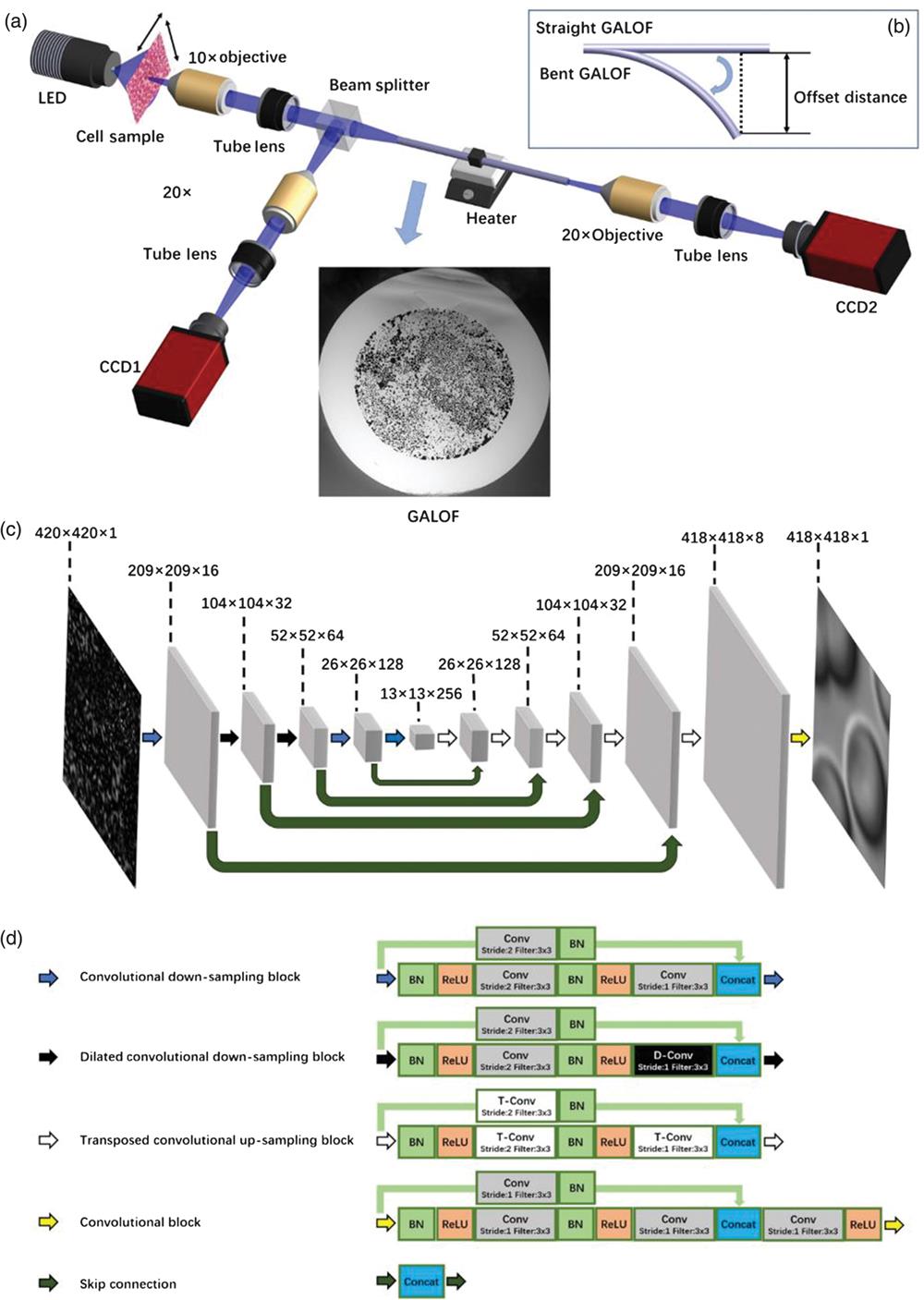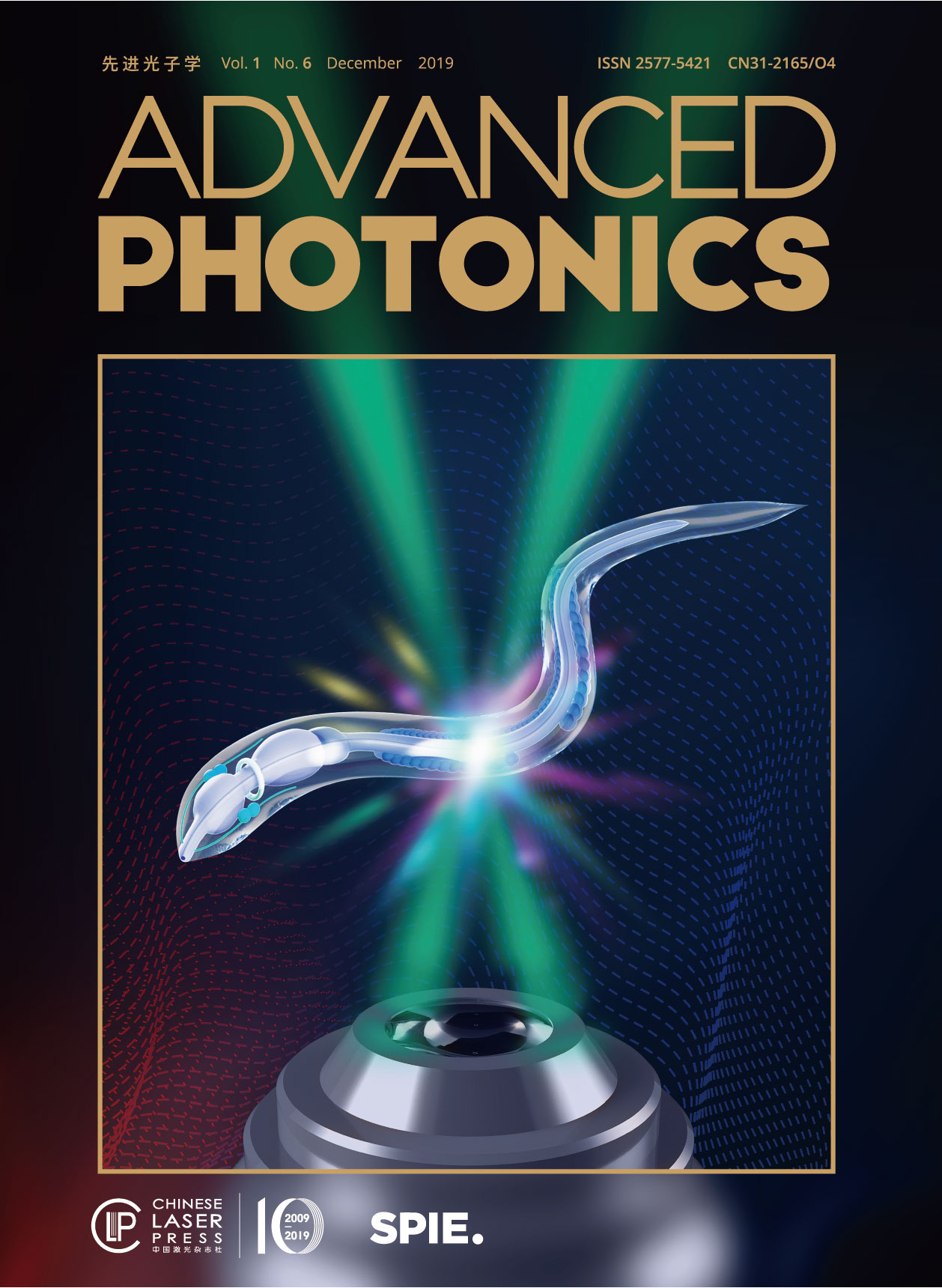Advanced Photonics, 2019, 1 (6): 066001, Published Online: Nov. 12, 2019
Deep-learning cell imaging through Anderson localizing optical fiber  Download: 850次
Download: 850次
Figures & Tables
Fig. 2. Cell imaging of different types of cells: (a)–(c) test data for human red blood cells and (d)–(f) test data for cancerous human stomach cells. All data are collected with straight GALOF, at room temperature with 0-mm imaging depth. The length of the scale bar in (a1) is S1 , avi, 10 MB (URL: https://doi.org/10.1117/1.AP.1.6.066001.1 )].

Fig. 3. Multiple depth cell imaging: (a)–(f) Test data for human red blood cells. All data are collected with straight GALOF at room temperature. All three images in each column are from the same depth. The length of the scale bar in (a1) is Supplementary Material .

Fig. 4. Cell imaging at different temperatures. (a1)–(c1) Test raw images of human red blood cells collected at 20°C, 35°C, and 50°C, respectively. The scale bar length in (a1) is Supplementary Material .

Fig. 5. Cell imaging under bending. (a)–(e) Data in each column correspond to examples with the bending offset distance listed above. The definition of offset distance is illustrated in Fig. 1(b) . The bending angle range corresponding to offset distances between 0 and 2 cm is about 3 deg. For more details, see Sec. 2 . (a1)–(e1) Raw images collected at different bending offset distances. The scale bar length in (a1) is Supplementary Material .

Fig. 6. Cell imaging transfer learning. (a)–(c) Sample cell images in the set of training data. The scale bar length in (a) is

Jian Zhao, Yangyang Sun, Hongbo Zhu, Zheyuan Zhu, Jose E. Antonio-Lopez, Rodrigo Amezcua Correa, Shuo Pang, Axel Schulzgen. Deep-learning cell imaging through Anderson localizing optical fiber[J]. Advanced Photonics, 2019, 1(6): 066001.






